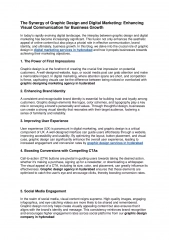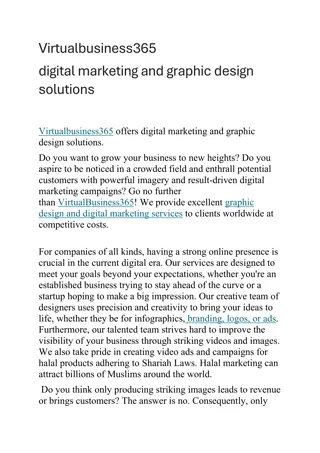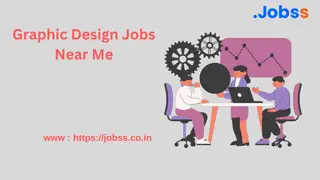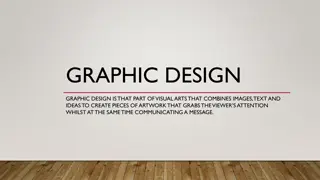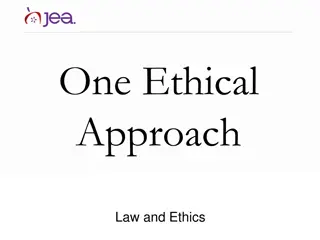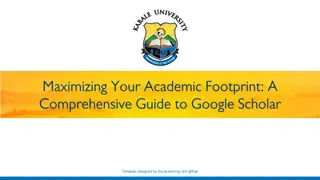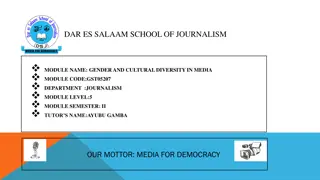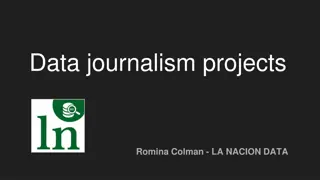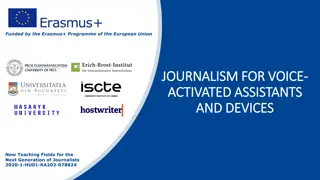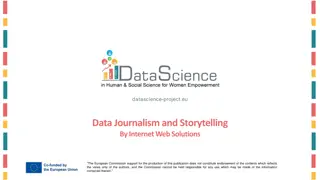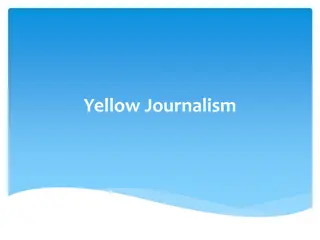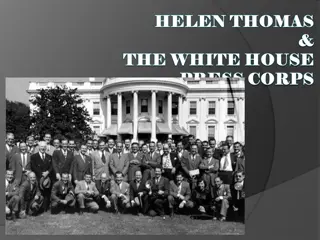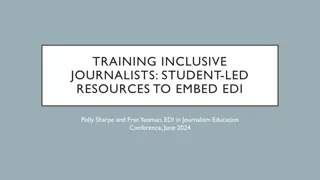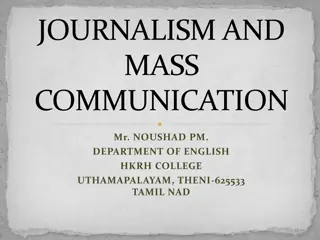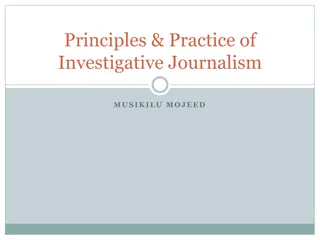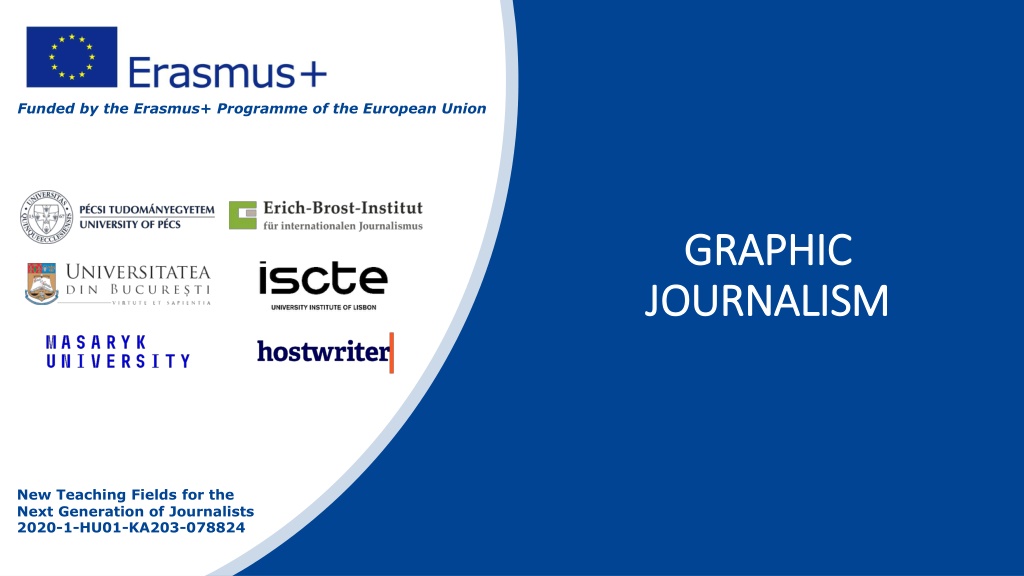
Exploring Graphic Journalism and Comics Studies
Dive into the world of graphic journalism and comics studies through a course funded by the Erasmus+ Programme of the European Union. Uncover tools for analyzing graphic narratives, study panel, sequence, and page structures, and learn from the insights of author Gyula Maksa. Understand the industry, creative contexts, and historical backgrounds that shape this media genre. Discover the power of sequential art in comics storytelling and explore the diverse cultural influences within this dynamic field.
Download Presentation

Please find below an Image/Link to download the presentation.
The content on the website is provided AS IS for your information and personal use only. It may not be sold, licensed, or shared on other websites without obtaining consent from the author. If you encounter any issues during the download, it is possible that the publisher has removed the file from their server.
You are allowed to download the files provided on this website for personal or commercial use, subject to the condition that they are used lawfully. All files are the property of their respective owners.
The content on the website is provided AS IS for your information and personal use only. It may not be sold, licensed, or shared on other websites without obtaining consent from the author.
E N D
Presentation Transcript
Funded by the Erasmus+ Programme of the European Union GRAPHIC GRAPHIC JOURNALISM JOURNALISM New Teaching Fields for the Next Generation of Journalists 2020-1-HU01-KA203-078824
Lesson3 Tools for Analysing Graphic Narratives
The Course Introduction to Comics Studies Comics as Media Culture Tools for Analysing Graphic Narratives Media Genres of Comics Journalism
About the author Gyula Maksa, PhD, dr. habil. is an associate professor at the University of P cs (Hungary), Department of Communication and Media Studies, where he directs the Comics Studies (K preg nytudom nyi Kutat k zpont). organized several conferences, published two books in Hungarian on comics as a medium: V ltozatok k preg nyre Comics, Budapest-P cs, Hungary, 2010), K preg nyek kult rak zi ramlatokban (Comics in Transcultural Flows, Cluj, Romania, 2017). His main research areas are the geopolitics of comics, transcultural situations and communicative uses of comics. Research Center He has and exhibitions (Variation for
What we are going to discuss In the course of our media text study, it is worthwhile to learn about the industry, creative and institutional context of each work, as well as the reception, the geographical-cultural variety and the historical context offered by the genre. Our background information thus provides us with a preliminary, comprehensive picture that we can shape, modify, partially reject or confirm in our more media-textual analysis. And what should we look out for in such a more mediatext- centric analysis? Here are some possible analysis aspects.
1.1.Panel Comic books are made up of different shapes and sizes of frames, or panels, which are arranged in sequences of images and pages, or double-pages. As in the case of cinematic narrative, we can talk about the use of panels as part of the framing. However, the framing is more variable in the case of comic narrative than in film, and the form of the frames is less fixed. 1. Panel, Sequence, Page
1.2. Sequence The panels are arranged in a sequence. Will Eisner, a comics creator who also reflects on the tools and expressions of comics storytelling, says that comics is a sequential art. From this point of view, therefore, the sequences of images, arranged in a single section, in a sequence, are the essence of comic media. This proved to be a powerful idea, while the boundaries between comic strip and cartoon are not sharp. 1. Panel, Sequence, Page
1.2. Sequence In terms of sequencing, Scott McCloud identifies six types of transitions and connections between panels. These are: 1. transition from moment to moment; 2. transition from action to action, showing a single sujet; 3. transition from subject to subject within the framework of a scene or an idea; 4. transition from scene to scene, often with a large jump in space and time; 5. transition from aspect to aspect, change of point of view for a scene, mood or idea; 6. non-sequitur, no logical relationship between panels. Scott McCloud's own research shows that in popular Western, i.e. American and European, comic book series, the most commonly used transition type is action-to- action, but there is also a strong presence of subject-to-subject and scene-to-scene transitions. Mangas show a greater variety in their use of transition types, and more frequent shifts in point of view. He draws this conclusion from the work of Tezuka Osamu, considered the father of modern manga, but also from artworks by other Japanese artists. 1. Panel, Sequence, Page
1.3.Page The panels are arranged in sequences, elliptical rows of images, allowing a linear, straight-line reading of the succession of frames. At the same time, they are also a space of one page and a double page that can be captured by the gaze. The page space, the page layout, also implies another reading mode, called tabular . Then the unit of the comic narrative is not the panel or the sequence, but the page. The framing of the comics is not only variable in terms of the size and shape of the frames, but also plural. Because of the space between panels, every frame, every sequence, every page and every double page has a frame, so that every panel exists in a multiple frame in the graphic narrative. 1. Panel, Sequence, Page
1.3.Page Benoit Peeters has grouped the page layouts. He did this on the basis of whether the narrative, or more precisely the linearity of the storytelling, or the composition is the dominant feature of the page concept, and how autonomous or independent the two are from each other. From this perspective, we can distinguish four cases: - linearity of storytelling dominant, narrative and composition are independent - conventional layout - dominated by the composition, narrative and composition are independent - decorative layout - linearity of storytelling dominant, narrative and composition are interdependent - rhetorical layout - the composition dominates, narrative and composition are interdependent - productive layout We can therefore talk about 1. conventional layout, where there are bars of the same height on the page, with frames of the same size (e.g. Garfield, Peanuts). 2. decorative layout is usually very spectacular, with special panel construction techniques emphasised, but not subordinated to the narrative or overly shaping the narrative (e.g. Tarzan). 3. rhetorical page layout, on the other hand, also adapts the paneling and page layout to the storytelling (e.g. Tinin, Asterix). 4. The paneling becomes a creative force, it plays a decisive role in shaping the narrative, and the tabularity of the visual, the composition is not subordinated to the story-telling, but can even sometimes make the linear image/text reading impossible through its productivity (e.g. Little Nemo in Slumberland, Simbabbad de Batbad). 1. Panel, Sequence, Page
Controlling questions Are the following statements true or false? - In popular American comic book series, the most commonly used transition type is aspect-to-aspect, but there is also a strong presence of subject-to-subject and scene-to-scene transitions. (false) - Mangas show a greater variety in their use of transition types, and more frequent shifts in point of view. (true) - The conventional page layout favours a lineal reading order. (true) - The composition of the rhetorical page layout is not adapted to the storytelling. (false) - Will Eisner called comics sequential art. (true)
2.1.Genre Typically, genre analysis asks how a media text, in this case a work of comics, benefits from different genre traditions. Which ones does it draw from, which ones is it associated with, what does it do with these traditions, how does it relate to them, how does it shape them? There are relatively well-defined genres that have been developed by the media industry. One of these is the comic strip, which, although related to the newspaper cartoon, is a comics genre consisting of three or four panels, with the last panel focused on the punchline. In the European francophone tradition, this is similar to the one-page gag, which in turn is typically part of a hardcover, full-colour gag collection published in a 48 or, less frequently, 64-page album. From a marketing point of view, the most sophisticated genre offering is that of the Japanese manga industry. 2. Genre, Graphic Style
2.2. Graphic Style The graphic style indicates a link to the comics tradition. Line drawing, use of colour, movement, onomatopoeia (sound painting) and ideograms are all part of the style. The homogeneity or heterogeneity of graphic styles, i.e. the "polygraphy" of a work, can be examined. 2. Genre, Graphic Style
2.2. Graphic style Scott McCloud distinguished between more realistic and more minimalist/iconic/abstract comic styles. We can also observe combinations of styles in one work. One example is the ligne claire graphic style that characterises Herg 's Tintin. In the Tintin series, the characters, especially the title character, are more minimalist, while the environment is more elaborate and realistic, this technique of making it easier to identify with the protagonist of the adventure series. The ligne claire allows for strong lines, a clear visual world and narrative. 2. Genre, Graphic Style
Controlling questions Are the following statements true or false? - In the Tintin series, the characters, especially the title character, are more realistic, while the environment is more minimalist. (false) - Will Eisner created the Tintin series. (false) - From a marketing point of view, the most sophisticated genre offering is that of the Japanese manga industry. (true) - Polygraphy refers to a homogeneous graphic style. (false) - The 48-page hardcover album is typical of North American comics tradition. (false)
3.1. The Role of Verbal Texts in Comic Iconotext The role of verbal texts in comic iconotext, types of image/text combinations according to Scott McCloud: - word specific combination, images illustrate the text as a whole - picture specific combinations, where the words act as a soundtrack to a storyline narrated in pictures - duo-specific combination, where picture and word convey essentially the same message - additive combination, where the word reinforces or expands the pictorial representation, or vice versa - parallel combination, where image and text are independent of each other but in the same panel space - montage combinations, where the words are part of the picture - interdependent, the most common and characteristic feature of comic books, where the image and the words together create and convey a message that they would not be able to do separately 3. Verbal Texts
3.2.Dialoge Bubbles, Onomatopoeia It should be noted that there are pantomime comics without verbal texts. It is a characteristic of comic creation that the integration of verbal representation into the graphic style may also require interpretation. The placement of text or words in bubbles, the shape, size and characterisation of the bubbles, the onomatopoeia , the typography, the size, shape and drawing of the letters, the caption of the frame, etc. The representation of the texts of those not present in the picture and those depicted, also require attention. Through onomatopoeic sound effects, they can express not only the character, strength, colour, slope of the sound, but also the spatial movement of the body shape emitting the sound. 3. Verbal Texts
Controlling questions Are the following statements true or false? - In the case of the word specific image/text combination, images illustrate the text as a whole. (true) - In the case of the duo-specific combination, the image and the word do not essentially convey the same message. (false) - In an additive combination, the word enhances or expands the pictorial representation, or vice versa. (true) - For montage combinations, the words are part of the picture. (true) - The most common feature of comic books is that the image and the words together create a message that they would not be able to do separately. (true)
Bibliography, referred works Rey Cabero, E. (2019): Beyond Linearity: Holistic, Multidirectional, Multilinear and Translinear Reading in Comics , The Comics Grid: Journal of Comics Scholarship https://doi.org/10.16995/cg.137 McCloud, S. (1994): Understanding comics, New York: HarperPerennial. Smolderen, T. (2012): Histoire de la bande dessin e in Maigret, Stefanelli (eds.): La bande dessin e: une m diaculture, Paris: Armand Colin INA, 71 90. Peeters, B. (1998): Lire la bande dessin e, Paris: Flammarion. Peeters, B. (2007): Four Conceptions of the Page , transl. by Jesse Cohn, ImageTexT, Vol. https://imagetextjournal.com/four-conceptions-of-the-page/ Vol. 9, No. 1. doi: 3, No. 3, 41-60.
Sources of Photos Illustration pictures: Articulate Content Library 360 Unsplash: All photos published on Unsplash can be used for free. You can use them for commercian and non-commercial purposes. https://unsplash.com/license Pixabay: CCO 1.0 Universal (CC0 1.0) Public Domain Dedication http://www.pixabay.com
Sources of Photos Freepik: https://www.freepik.com/ Pexels: All photos on Pexels can be used for free. https://www.pexels.com Microsoft Powerpoint Stock Photos
Other Sources of Photos https://openlibrary.org/books/OL7286003M/Understanding_Comics https://editions.flammarion.com/lire-la-bande- dessinee/9782081244856 https://link.springer.com/book/10.1007/978-3-030-43554-7
Where you can find us newsreel.pte.hu newsreel@pte.hu thenewsreelproject @thenewsreelproject The project was funded by the European Commission. The views expressed in this publication do not necessarily reflect those of the European Commission. @newsreelproject

